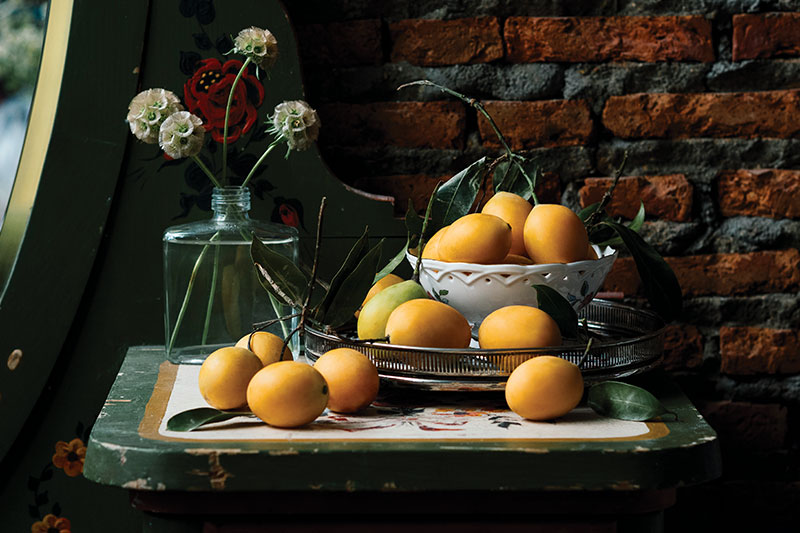
Don’t be Fooled by This Fruit
Though it hides under a false name, the plum mango has a unique flavour that’s unmistakable
Photo & Style: Samatcha Apaisuwan
If it looks like a mango, smells like a mango and even tastes like a mango, it has to be a mango, right? Not in the case of the plum mango, which is an entirely different – but equally delicious – species. Called “Maprang” in Thai, these oval shaped, egg-yolk yellow fruits come in two flavours, sweet and sour.
Ripe plum mangoes are honey-sweet and their juicy, soft flesh can be eaten raw. Even their yellow peel is edible, though it can be removed if you don’t like the texture. Just avoid biting into the purple seed at its centre, otherwise you’ll get a bitter taste in the mouth.
Plum mangoes have a special place in Thai cuisine, showing up in spicy salads and sour soup (Kaeng Som). They can also be turned into jam, canned in syrup or served in the form of a juice or smoothie.
But the most delicate culinary form of this summer fruit is the carved version, or “Maprang Riew” – a serving style that dates back more than two centuries to the early Rattanakosin era. It first appeared in King Rama II’s “Verses of Food and Dessert” (“Kaap Hae Chom Krueang Khao Waan”) and became popular during the reigns of Rama III and Rama IV. The tradition of fruit carving was a popular custom practiced by women in the Thai royal palace.
Plum mangoes or Maprang have a cousin called Mayong Chid, or Marian plum in English. Although they look similar at first, it is easy to tell them apart once you know the differences. Ripe Maprang are small, sweet fruits with a soft-yellow colour while ripe Mayong Chid are yellowish-orange and more tangy.
